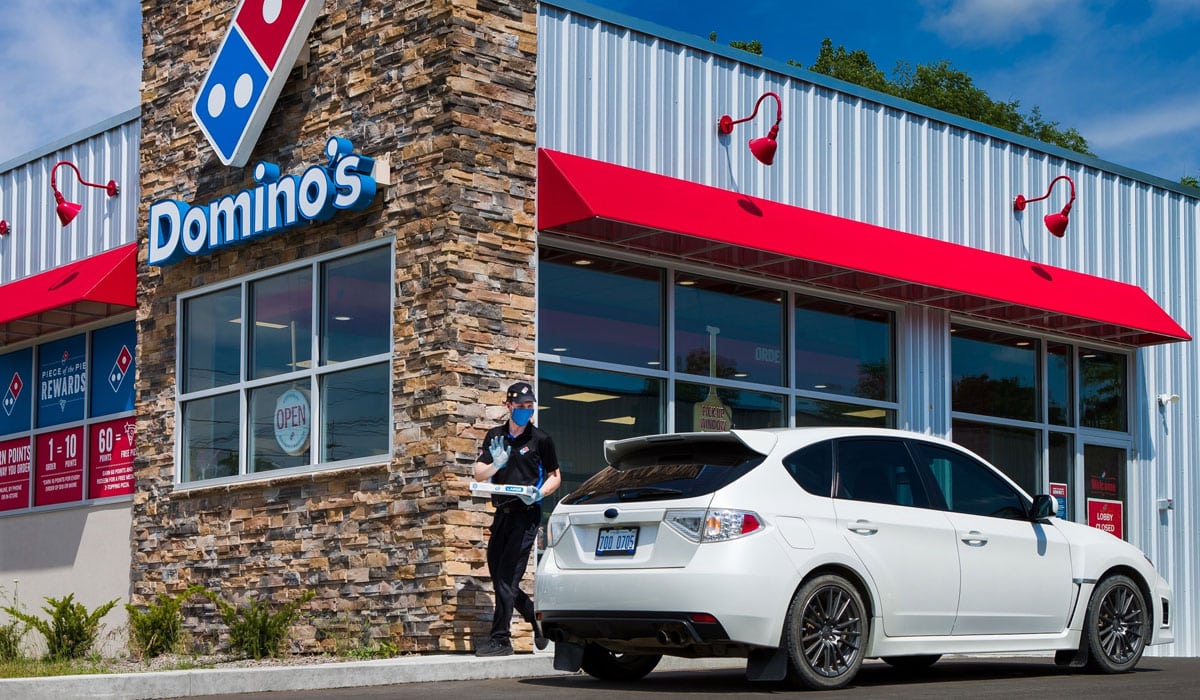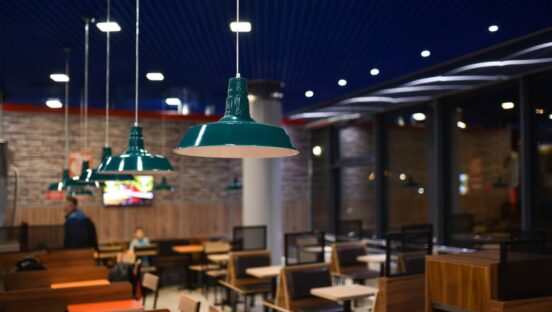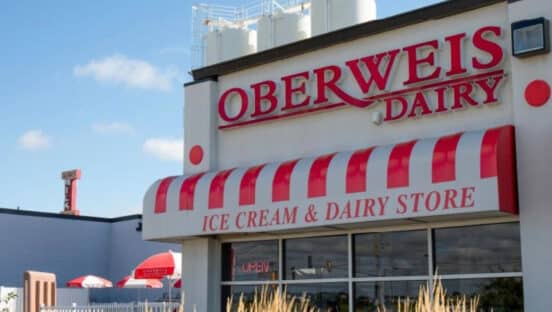The COVID pandemic has changed the way many restaurants view their long-term strategies, but not Domino’s.
If anything, the crisis has pushed the pizza chain to double down on its goals, CEO Ritch Allison said Thursday. This includes attracting and retaining new customers, product innovation, fortressing, and rejecting third-party delivery companies.
Product innovation may be the most recent example. This past Monday, Domino’s added a new 10-piece chicken wing option to its $7.99 value platform, which is being offered through digital channels. Innovation won’t stop with the wings, either—Allison said more product news will be introduced over the next few months.
The CEO noted that Domino’s doesn’t launch new products just to create news. Instead, it’s to drive incremental sales and profitability for franchisees. The company prefers to focus on permanent menu items that fit into existing value platforms.
“Wings are a rapidly growing category in delivery and carryout, and if we’re honest with ourselves, our wings needed to improve,” Allison said during the brand’s Q2 earnings call. “And this is a sign that continued menu innovation doesn’t always have to be something brand new, but can be a major renovation of existing products that customers have simply told us need to be better.”
The focus on value is an important piece, considering the U.S.’s current economic outlook and the near end of enhanced unemployment benefits. Although the Trump administration has favored another round of stimulus checks, there’s no certainty that will be part of the next relief bill.
“We’re going to be in a recession for some period of time here where consumers’ pocketbooks are going to be under pressure,” Allison said. “And so we’ve got to have great value with our national offers, great value on our menus. And we got to have great value with respect to what we charge to customers to deliver that food. I feel very good about where Domino’s is positioned on those fronts.”
Same-store sales soared 16.1 percent in Q2, lapping 3 percent growth in 2019. Company stores increased 16.9 percent while franchises grew 16 percent. U.S. Domino’s stores have grown for 37 straight quarters, with Q2 being the highest on the list.
International stores lifted 1.3 percent, marking the company’s 106th straight quarter of growth in the market. After peaking at 2,400 closures, there are now fewer than 600 temporarily shuttered international units.
During Q2, Domino’s spent $40 million to acquire a minority interest in Dash Brands, the company’s master franchisee in China. The chain will invest another $40 million in Q1 2021, assuming certain conditions are satisfied.
“This is a very exciting growth market for us,” said CFO Jeffrey Lawrence, who also announced his impending retirement Thursday. “Ritch and I have a lot of personal experience spending a lot of time there, and we know if we want to hit our long-term aspirations as a brand, we have to have China be a thriving market for us.”
Domino’s ended Q2 with 6,195 U.S. units—346 company-owned and 5,849 franchisees. In the quarter, one company-run store and 39 franchises opened. The pizza chain saw a net gain of 45 international restaurants, increasing the unit count to 10,978.
Revenue increased 13.4 percent to $920 million and net income lifted 28.5 percent to $118.7 million.
“We’ve had pretty strong growth and demand without having to ask our franchisees to pay high fees to a third party,” CEO Ritch Allison said of delivery.
Digital channels represented about 75 percent of sales in Q2, rising as high as 80 percent in some weeks. Allison said the delivery business—driven by higher order counts and ticket sizes—was effective in drawing new customers.
In fact, Q2 was Domino’s best quarter in terms of adding new active loyalty members since Q1 2019 when the chain ran its Points for Pies promotion.
“We are getting an incredible opportunity today to bring more customers into the brand,” Allison said. “If you look at the delivery business in particular, we’ve seen a significant increase in new customer acquisition over the course of the second quarter. Our task there is to take those new customer opportunities and convert them into the second purchase and the third and ultimately loyal customers going forward.”
Lawrence said the accelerated levels of demand seen during the middle of Q2 remained elevated through the end of the quarter with no discernible drop-off.
The trends confirmed Allison’s belief that Domino’s doesn’t need a relationship with a third-party aggregator.
“I cannot imagine that we would’ve been able to move as quickly as we have in meeting our customers … where they wanted to be if we didn’t have full control over that digital experience and the actual contactless experience at the point of delivering the food,” Allison said. “We’ve had pretty strong growth and demand without having to ask our franchisees to pay high fees to a third party.”
Domino’s continues to take on that third-party challenge through its fortressing strategy in which the brand fills markets to shrink delivery radiuses, thereby improving consistency, delivery times, and lowering costs. The brand also sees the strategy as a way to attract incremental carryout customers.
With increased sales, momentum around delivery, and the prospect of favorable real estate, Allison said he’s even more enthusiastic about the plan.
“An unfortunate reality of the pandemic is that there will be a number of retail stores and restaurants that will close, quite a few of which will be in a similar footprint to what we look for,” Allison said. “And I think also we may see a more favorable market in terms of rents that we can go out there and get with landlords. I’m as optimistic and more so than ever around fortressing.”
Also of note, Domino’s gave nearly $8 million in bonuses to hourly employees at corporate stores and supply chain centers. During the quarter, the company announced a $3 million investment in Black communities, including $1 million toward establishing the Domino’s Black Franchise Opportunity fund.
Additionally, the brand is in the process of expanding its supply chain infrastructure. Domino’s completed a supply chain center in Columbia, South Carolina, and is on pace to finish another in Katy, Texas. It’s working on a new thin crust manufacturing center in New Jersey, as well.









